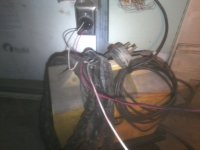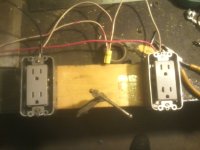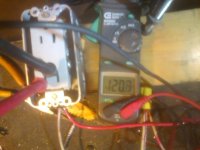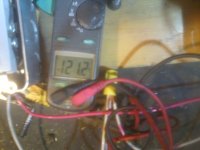Fawken
Platinum Member
Looking forward to your tests.
Running a mwbc with shared neutral is no different than the power coming to your box from the meter/xfmr. (2)/120v legs with ONE neutral.
That neutral will NEVER see more current than what is one ONE single leg. It is NOT additive.
In fact, the service entrance can have a downsized neutral in most cases. And the only way to overload it would be to pull the max off a single leg and NONE from the other. Which would be very unlikely. It don't matter if you pull 10 amps from each leg, or 200 from each leg. If what you are pulling is equal, amps on neutral will be zero. If its not equal, neutral only sees the difference
I'm beginning to think you're not quite as dumb about electricity as the title of your post implies!



